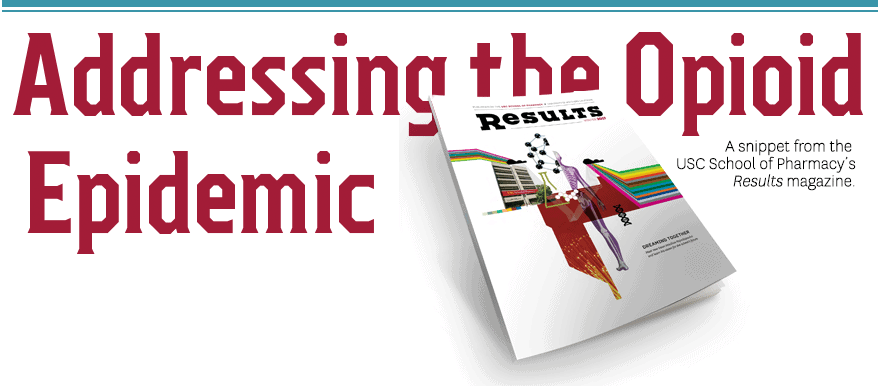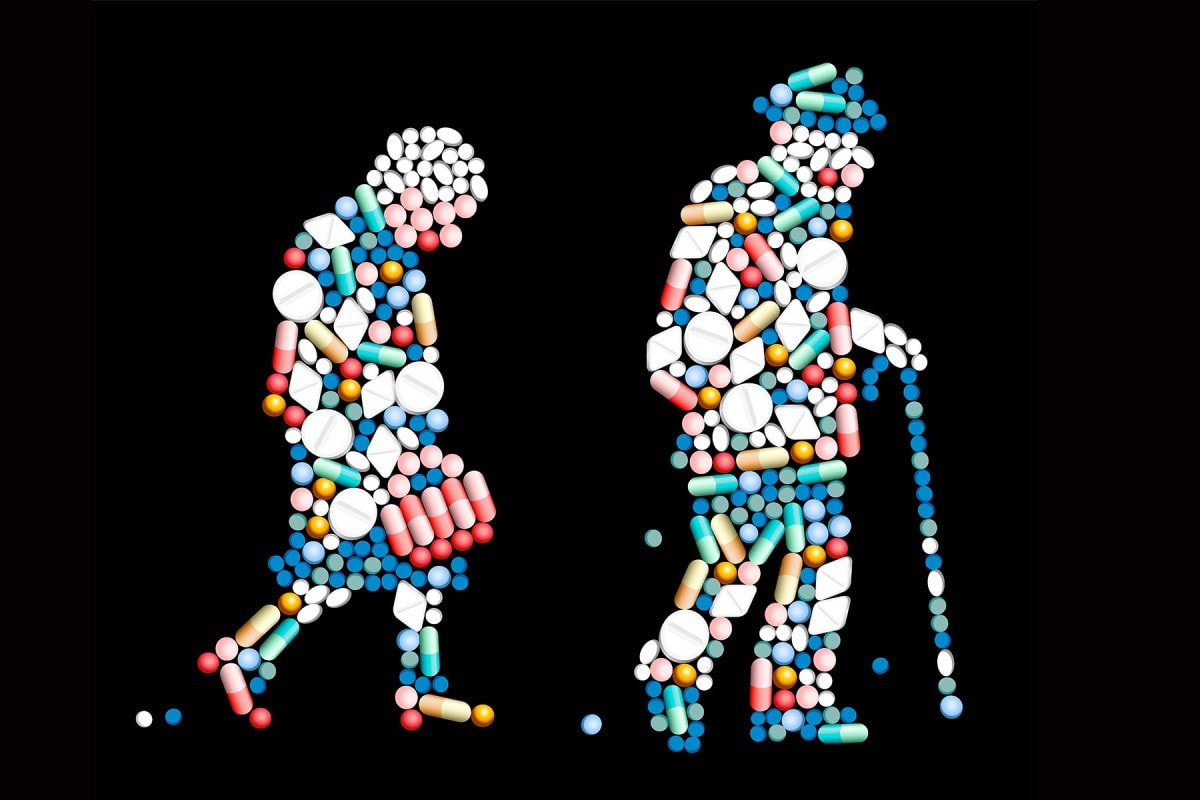 Drug overdoses have surpassed automobile collisions as the leading cause of accidental death, according to the Centers for Disease Control and Prevention, and the upward trend is alarming.
Drug overdoses have surpassed automobile collisions as the leading cause of accidental death, according to the Centers for Disease Control and Prevention, and the upward trend is alarming.
“The opioid epidemic may be the nation’s most pressing healthcare crisis,” says Steven Chen, chair of the Titus Family Department of Clinical Pharmacy and the William A. Heeres and Josephine A. Heeres Endowed Chair in Community Pharmacy. The U.S. surgeon general has urged healthcare professionals to manage pain through evidence-based principles and reform how the country views addiction by “talking about it as a chronic illness, not a moral failing.”
The USC School of Pharmacy is well-positioned to play a leadership role in this effort. Assistant Professor Melissa Durham — a certified expert in pain management — has shifted her responsibilities to focus full time on advancing clinical practice, scholarship and teaching in pain and opioid-addiction management. In addition to her longstanding work in this field, she previously directed the school’s Professional Experiential Programs. Associate Professor Naomi Florea has stepped up to serve as interim director.
“Opioid abuse and misuse is a huge problem in our country,” Durham says. “Pharmacists can play an essential role in decreasing the deaths related to opioid overdose.”
Effective April 2015, pharmacists are allowed to furnish, without a prescription, naloxone kits to reverse opioid overdose after completing continuing education on its use. In July, the school hosted a seminar for pharmacists on opioid safety, and Durham continues to spread the word about tools available to combat the epidemic, such as the Controlled Substance Utilization Review and Evaluation System (CURES) — a prescription drug monitoring system.
In June, the USC Schaeffer Center for Health Policy & Economics released a new study in JAMA Internal Medicine demonstrating that a large number — nearly 15 percent — of Medicare patients receive their first prescription for opioids within a week of being discharged from the hospital. The study is one of the first to quantify the rate of new opioid prescription amid growing national concern about the use of addictive painkillers.

